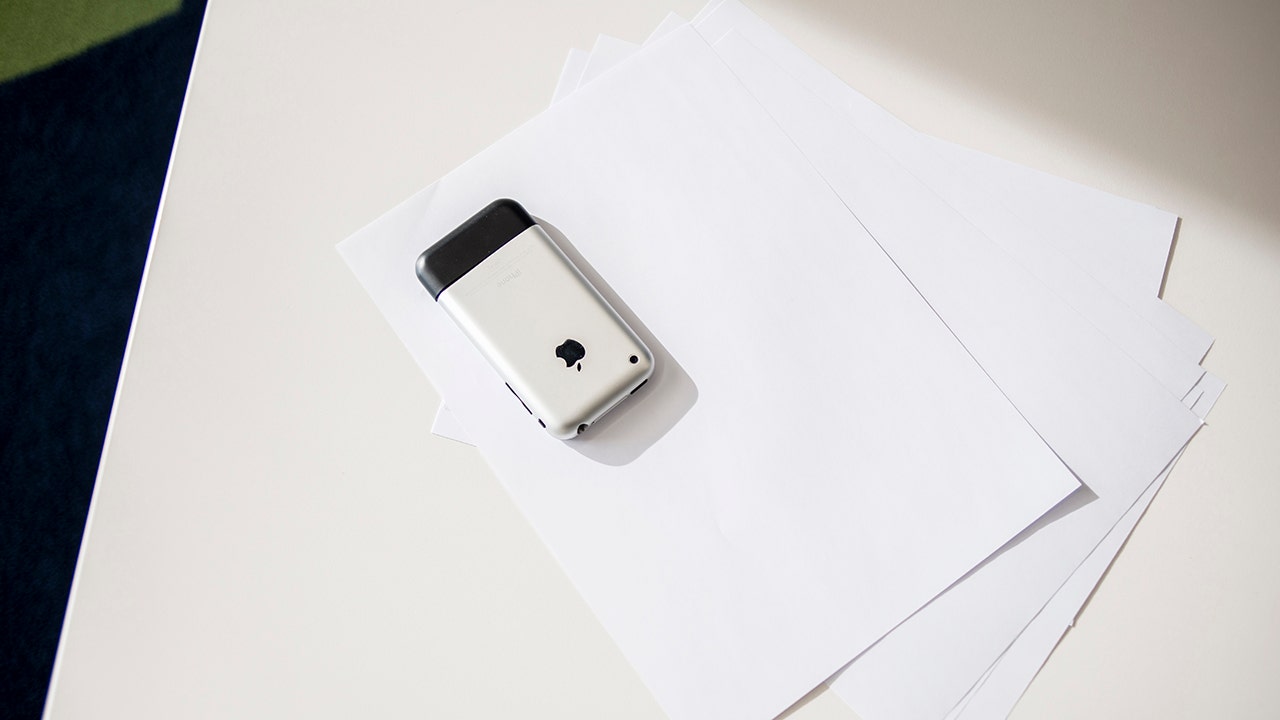On this historic day, June 29, 2007, Apple’s revolutionary iPhone made its debut at Apple retail stores across the United States. In a press release, Apple shared that all 164 of its retail stores stayed open until midnight, allowing enthusiastic customers to purchase up to two iPhones on a “first-come, first-served basis.”
The unveiling of the iPhone had been eagerly anticipated after being announced by Apple CEO Steve Jobs on January 9, 2007. Despite being one of Apple’s most poorly-kept secrets, the iPhone still managed to generate an unprecedented level of excitement and anticipation.
Leading up to the Macworld Expo, tech blogs circulated rumors containing alleged details about the iPhone. Closer to the launch date on June 29, hundreds of dedicated fans camped outside of Apple and AT&T stores in anticipation of getting their hands on the $600 gadget.
The iPhone was hailed as a “revolutionary and magical product” by Jobs during his keynote speech. It featured a groundbreaking multi-touch display and innovative software that allowed users to control the device with simple gestures like taps, flicks, and pinches. As Jobs noted, the iPhone’s user interface was a significant advancement, comparable to the introduction of the mouse.
The first generation iPhone combined the functionality of a mobile phone, an iPod, and a portable internet device. It offered email, web browsing, and mapping capabilities, which were considered the best available on a mobile phone at that time. The original iPhone came preloaded with 15 apps, including familiar ones like Calendar, Contacts, and iPod.
The App Store, which is now integral to the iPhone experience, didn’t exist until the release of the iPhone 3G in 2008. Initially launching with 500 apps, the App Store quickly became an essential part of the iPhone ecosystem, offering users access to a wide range of applications and expanding the device’s capabilities.
Although the iPhone garnered significant interest upon its release, its high price initially limited its mainstream appeal. However, Apple addressed this concern by lowering the cost just two months after the initial launch. The real breakthrough came in 2008 with the introduction of the iPhone 3G, which was more affordable and had access to faster 3G networks. The iPhone 3G quickly became a global sensation, with over 10 million units sold in just five months.
The iPhone’s success continued to grow, with Apple reaching the milestone of selling one million iPhones just 74 days after the original launch. Subsequent iPhone models, such as the iPhone 4, 5, and 6, offered enhanced features like improved cameras, thinner designs, and better battery life.
In recent years, Apple has maintained its dominance in the smartphone market by making incremental improvements to the iPhone’s cameras, screen resolution, and processing power. The iPhone 11 Pro and Pro Max introduced a triple-camera system, with the third camera enabling users to capture ultrawide-angle pictures. The iPhone 12 Pro and Pro Max, released in 2020, offered an even larger screen size, while the iPhone 13 and 13 mini introduced a new processor and longer battery life in 2021.
Looking ahead, Apple enthusiasts eagerly anticipate the release of the iPhone 15 in 2023. This highly anticipated device is expected to bring new and exciting features to the iPhone lineup.
With over 2.3 billion iPhones sold since 2007, Apple has established itself as the leading brand in the global smartphone market. In 2022, iPhone sales accounted for 52% of Apple’s $394.3 billion in revenue. Valued at over $2 trillion, Apple is not only the most influential technology company but also the most valuable technology company in the world.
In summary, the iPhone’s impact on the world has been profound, revolutionizing the way we communicate, consume media, and access information. Apple’s commitment to innovation and user experience has solidified the iPhone’s position as a cultural icon and a symbol of technological advancement.
Denial of responsibility! VigourTimes is an automatic aggregator of Global media. In each content, the hyperlink to the primary source is specified. All trademarks belong to their rightful owners, and all materials to their authors. For any complaint, please reach us at – [email protected]. We will take necessary action within 24 hours.


